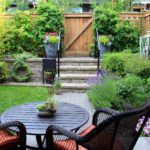How to Remove Standing Water From Your Yard
Are you struggling with standing water in your yard?
Standing water if left can lead to plant death, mold growth, and foundation weakening. It’s also the perfect breeding ground for mosquitoes and other waterborne pests. And if you’re not a professional, it can be hard to know where the water comes from, or how to prevent it from pooling in your yard.
Don’t worry, we’re here to help! Keep reading for our guide on how to remove standing water from your landscaping.
Aerate the Lawn
Another gardening & landscaping tip for standing water is to aerate the soil. An aerator can places small holes into your lawn’s surface, breaking up compacted soil.
Nutrients, air, and water can reach the roots of the grass better for healthier growth. The roots can absorb the water better, leading to less soil saturation, and in turn, less water pooling.
Extend Your Downspouts
In many cases, your landscaping may be part of your problem. Plant beds close to your home, especially if they have border stones, can trap water. Once it leaves your gutters, it starts to pool along your foundations.
Extend your downspouts away from your home to keep the water away from your foundations. This will prevent pooling water from damaging and undermining your foundations.
Re-Grade
Landscaping companies can survey your lawn for trouble spots, channels, and natural drains. Once surveyed, they can target the problem areas. If you need these landscaping services, make sure to re-grade the area around your home as your first step.
Use a French Drain
French drains move any rainwater away from your home. You can make them yourself, without a lot of material or tools. Dig a trench for the water to flow out towards the edge of your yard.
This trench should end near a drain where possible. If not, a shallow trench with good drainage.
Fill the trench with gravel or landscaping stones, and place a perforated tub to keep the soil separate from the rocks. As the water enters the trench from the channel, it’ll seep into the holes and down into the soil.
Make a Dry Creek
If you don’t like French drains, you can opt for a dry creek. This gravel path diverts the water to drain away somewhere safe. Often, they blend better with the landscape design and look less artificial.
Make sure you don’t channel the water into a neighbor’s yard, or onto a public path. This could cause you legal issues in the future. The water should divert away somewhere it won’t cause issues for other people.
Remove Debris
Clear away any debris that could prevent water from draining from your yard. A lawn rake will do most of this task. When mowing your lawn, use a bag or the mulch feature. This will prevent heavy patches of deposited cut grass.
Removing Standing Water From Your Landscaping the Easy Way
So, there you have it! Now you know how to remove standing water from your landscaping, you’re set to deal with the issue.
It’s best to start with a survey from a landscaping company that can help address problem areas. They’ll also give the best advice on how to deal with the issue of pooling water in your yard. You don’t want a band-aid fix, after all, you deserve a permanent one.
If you’re looking for professional landscaping services, contact us today. At Every Season Landscaping & Lawn Care, we’ve got the knowledge and skills to suit all your yard needs.



